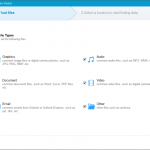Cellular vs. Satellite: The Main Differences
Trust me when I say this, you won’t probably need to buy a sat phone, ever. But you’ll be glad that you did, if and when the time comes. Let me explain.
Mobile networks have come a long way in terms of speed and reliability, but they are still limited by land based network systems like towers. That isn’t the case for Satellite phones because they derive their connectivity directly from low orbit satellites.
“This makes satellite phones a far more reliable choice in case of a holocaust or other major exodus!”
Now if you are convinced that you need a satellite phone in your life, then hold on just a second. As much as Sat phones seem like an all-round proposition, they are in-fact first and foremost, a form of basic communications.
You see, satellite phones are mostly used by a very select group of individuals that cannot afford to miss communications. The customer base might include The President, Communist Dictators, Military, Shipping Companies, Airlines, Search and Rescue teams, Hospitals and other high profile individuals that shall not be named and need a basic means of basic communication at all times. These phones have a global network coverage, since they aren’t bound by terrain cell towers and the communications gets handled directly via a satellite network.

The Differences between Cellular and Satellite Phones
If you are expecting your Satellite phone to come quipped with the latest and greatest of features, prepare to get disappointed. As a matter of fact, these two phones couldn’t be further apart as far as generational leaps go.
Here are a few major differences between Cellular and Satellite phones:
1. Connectivity
As stated earlier, cellular networks work on faster terrestrial tower grids with which you not only have access to better call quality but also internet and video calls. Also cellular networks work on commercial mass-market smartphones, which means swapping over networks do not require you to change devices on most occasions. The limitation however is that there is no global coverage and even in places inside the same country where there are no cell towers, the device basically becomes useless if you want to make a call.
Satellite Phones on the other hand are sparse and meant for basic connectivity like calls and texts. Due to their connectivity with the satellite systems, they are more tuned for power efficiency and are network optimization than conventional smartphones as communicating to and from satellites has its delay due to the slow speeds and latencies during connectivity.
2. Features
Smartphones in general today come bundled with a lot of things that we have taken for granted – Cameras, Touch Screens, 5G and most importantly a clean UI. These are things that we have perhaps taken for granted and living without them could prove to be difficult. But that’s exactly the sort of compromise that you will have to live with if you opt in for a sat-phone. Most of them are basic communicating devices that are meant to be used in areas where your smartphone fails to communicate. So forget your PubG Mobile and touch screens, these devices don’t do that.
And neither do they look anything like the current generation of smartphones. Think of Motorola’s from the 2000’s and you are getting close. That being said, there are probably 1 or 2 over obscure Chinese origin sat phones that do run on android but for the most part, these phones prioritize battery and connectivity over anything else.

The primary objective here is to act as a mission ready device that you can reliably depend upon at the ends of earth and not snapchat on top of a Mountain Peak or the middle of a desert.
3. Cost
While cost is a subjective matter and you can certainly buy smartphones that easily cost over $1000. The idea here is that if you own a Satellite phone, you are going to pay more for the privilege of communicating. Depending on regions, a single minute on a sat phone can cost you well over $4, whereas calling is basically free on commercial carriers.
Another ting to factor in is that you can either be billed on the amount of time that you have used or you can get pre-paid minutes, whichever suits your needs. In general Sat phones come per-configured and on contract from vendors like Iridium, Inmarsat, Globalstar and so on. So the cost of ownership can be a bit high depending on your usage.
Conclusion
As you can see by now, these two smartphones target significantly different audiences. They are built differently and prioritize different features over others. Hopefully there will come a day when the divide between the two will cease to exist, but for now that doesn’t seem to be the case. Satellite phones are really like trucks in a matter of speaking. They sacrifice looks and features for usability, but doesn’t mean that they are boring.





![How to use tech to take better breaks [Infographic]](https://technofaq.org/wp-content/uploads/2017/03/How-to-use-breaks-to-be-more-productive-150x150.png)







